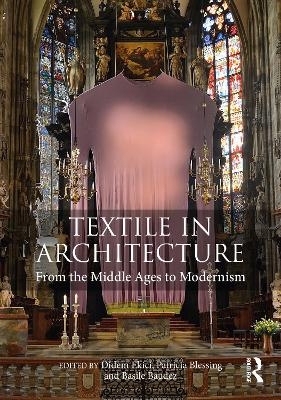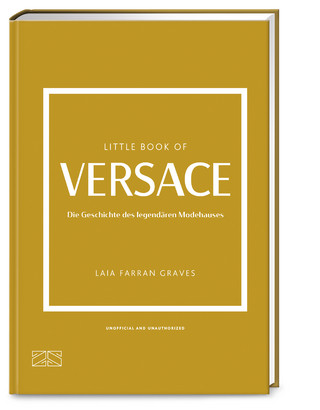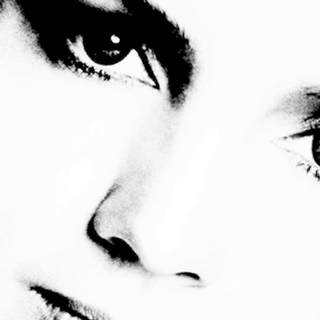
Textile in Architecture
Routledge (Verlag)
978-1-032-25044-1 (ISBN)
This book investigates the interconnections between textile and architecture via a variety of case studies from the Middle Ages through the twentieth century and from diverse geographic contexts.
Among the oldest human technologies, building and weaving have intertwined histories. Textile structures go back to Palaeolithic times and are still in use today and textile furnishings have long been used in interiors. Beyond its use as a material, textile has offered a captivating model and metaphor for architecture through its ability to enclose, tie together, weave, communicate, and adorn. Recently, architects have shown a renewed interest in the textile medium due to the use of computer-aided design, digital fabrication, and innovative materials and engineering. The essays edited and compiled here, work across disciplines to provide new insights into the enduring relationship between textiles and architecture. The contributors critically explore the spatial and material qualities of textiles as well as cultural and political significance of textile artifacts, patterns, and metaphors in architecture.
Textile in Architecture is organized into three sections: “Ritual Spaces,” which examines the role of textiles in the formation and performance of socio-political, religious, and civic rituals; “Public and Private Interiors” explores how textiles transformed interiors corresponding to changing aesthetics, cultural values, and material practices; and “Materiality and Material Translations,” which considers textile as metaphor and model in the materiality of built environment. Including cases from Morocco, Samoa, France, India, the UK, Spain, the Ancient Andes and the Ottoman Empire, this is essential reading for any student or researcher interested in textiles in architecture through the ages.
Didem Ekici is Assistant Professor in the Department of Architecture and Built Environment at the University of Nottingham. She is the co-editor of Housing and the City (Routledge, 2022). Healing Spaces, Modern Architecture, and the Body (Routledge, 2017) as well as the author of numerous articles on modern architecture culture. She is currently working on her monograph titled Body, Cloth, and Clothing in Architecture from the Age of Mass Manufacture to the First World War. She has held research fellowships from The Wellcome Trust, The German Academic Exchange Service, The Wolfsonian-Florida International University, and The University of Michigan Institute for the Humanities. Patricia Blessing is Assistant Professor of Islamic Art History in the Department of Art & Archaeology at Princeton University. Her first book, Rebuilding Anatolia after the Mongol Conquest: Islamic Architecture in the Lands of Rūm, 1240–1330 (Ashgate, 2014) investigates the relationship between patronage, politics, and architectural style after the integration of the region into the Mongol empire. Her second book, Architecture and Material Politics in the Fifteenth-century Ottoman Empire (Cambridge University Press, 2022) analyses how transregional exchange and the use of paper shaped building practices across the Ottoman realm. Blessing’s work has been supported by ANAMED Research Center for Anatolian Cultures, the British Academy, the Samuel H. Kress Foundation, the International Center of Medieval Art, the Society of Architectural Historians, the Barakat Trust, and the Gerda Henkel Foundation. Basile Baudez is Assistant Professor of architectural history in the Art & Archaeology department at Princeton University. His first book Architecture et Tradition Académique au Siècle des Lumières (2012) questions the role of architects in early modern European academies. He co-edited several volumes dedicated to French architecture and curated exhibitions on architectural drawings at the Ecole des Beaux-Arts and the Courtauld Institute of Art. His latest book, Inessential Colors: Architecture on Paper in Early Modern Europe (Princeton University Press, 2021) questions the role of color in Western architectural representation from the Renaissance to the nineteenth century. He currently works on an urban history of textiles in 18th-century Venice.
Part 1: Ritual Spaces 1. The Red Tent in the Red City: The Caliphal Qubba in Almohad Marrakesh 2. "He will Lift off the Covering Which is Over All the Peoples": Seeing Through Medieval Lenten Veils 3. Architectural Space and Textiles: Tying Samoan Society Together Part 2: Public and Private Interiors 4. Le Rideau Tire: Interior Drapery, Architectural Space, and Desire in Eighteenth-Century France 5. The Fabric of the New: Mediating Architectural Change in Late Colonial India 6. Contrast and Cohesion: Textiles and Architecture in 1930’s London Part 3: Materiality and Material Translations 7. Textiles by Other Means: Seeing and Conceptualizing Textile Representations in Early Islamic Architecture 8. The Textility of the Alhambra 9. The Textile Foundations of Ancient Andean Architecture 10. The Ruler’s Clothes and the Manifold Dimensions of Textile Patterns on Muslim Funeral Architecture in the Mausoleum of the First Crimean Khans 11. A Tented Baroque: Ottoman Fabric (and) Architecture in the Long Nineteenth Century
| Erscheinungsdatum | 11.07.2023 |
|---|---|
| Zusatzinfo | 89 Halftones, black and white; 89 Illustrations, black and white |
| Verlagsort | London |
| Sprache | englisch |
| Maße | 174 x 246 mm |
| Gewicht | 620 g |
| Themenwelt | Kunst / Musik / Theater ► Design / Innenarchitektur / Mode |
| Kunst / Musik / Theater ► Kunstgeschichte / Kunststile | |
| Technik ► Architektur | |
| ISBN-10 | 1-032-25044-5 / 1032250445 |
| ISBN-13 | 978-1-032-25044-1 / 9781032250441 |
| Zustand | Neuware |
| Haben Sie eine Frage zum Produkt? |
aus dem Bereich


